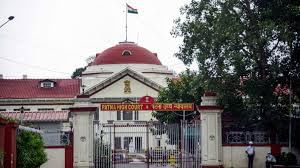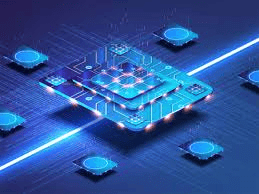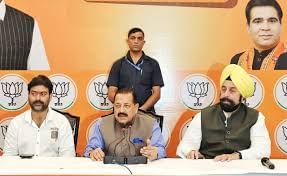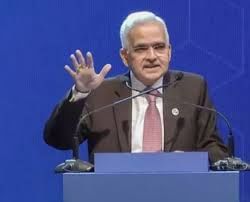UPSC Daily Current Affairs- 3rd September 2024 | Current Affairs & Hindu Analysis: Daily, Weekly & Monthly PDF Download
GS3/Science and Technology
Chip assembly plant in Gujarat
Source: Indian Express

Why in news?
The union cabinet, led by PM Modi, has given the green light to Kaynes Semicon to establish a semiconductor manufacturing unit in Gujarat with an investment of INR 3,300 Cr. This marks the fifth semiconductor unit and the fourth assembly unit approved by the Cabinet. The proposal falls under the India Semiconductor Mission (ISM).
- Semiconductor manufacturing in India
- Semiconductors and displays serve as the backbone of modern electronics.
- These components are vital for a wide range of electronics, including computers, smartphones, and automotive brake sensors.
- Need for domestic manufacturing of semiconductors
- India currently relies entirely on imports for its semiconductor needs.
- The demand for semiconductors in India is expected to soar to approximately USD 100 billion by 2025, up from USD 24 billion currently.
- The lack of local manufacturing severely impacted India during the COVID-19 lockdown.
- Geopolitical significance
- In the current global landscape, having reliable sources for semiconductors is crucial for national security.
- Concerns have been raised about potential vulnerabilities in telecom equipment supplied by foreign companies, particularly from China.
- Steps taken by the Govt to promote indigenous semiconductor industry
- The India Semiconductor Mission (ISM), launched in 2022, aims to develop a thriving semiconductor ecosystem within the country.
- This initiative is part of the Digital India Corporation, focused on enhancing semiconductor manufacturing, packaging, and design capabilities.
- ISM operates with administrative and financial independence, guided by a board of global semiconductor experts.
- SemiconIndia Programme
- Approved in 2021 with a budget of INR 76,000 crore, this program seeks to establish a sustainable semiconductor and display ecosystem in India.
- It offers attractive incentives to businesses involved in semiconductor-related sectors, including Silicon Semiconductor Fabs, Display Fabs, and Semiconductor Packaging.
- Design Linked Incentive (DLI) Scheme
- This scheme provides support to 100 domestic semiconductor design companies for Integrated Circuits (ICs), Chipsets, and System on Chips (SoCs).
- The Centre for Development of Advanced Computing (CDAC) oversees the implementation of the DLI Scheme.
- Modified Scheme for Setting up of Semiconductor Fabs
- This scheme offers 50% fiscal support for setting up semiconductor fabs in India, as part of the broader Semicon India program.
- Fiscal Support
- The Central Government has committed to supporting various stages of the supply chain, including electronic components and finished goods.
- Overall, the government has pledged INR 2,30,000 crore (USD 30 billion) to transform India into a global electronics manufacturing hub, with semiconductors as a key focus.
- Chips to Startup (C2S) programme
- This program aims to train 85,000 engineers in Electronic System Design and Manufacturing (ESDM) over five years.
- About the news
- The Union Cabinet's approval for Kaynes Semicon Pvt Ltd to set up a semiconductor manufacturing unit in Sanand, Gujarat, is a significant step towards a strong semiconductor ecosystem in India.
- The project, with an investment of ₹3,300 crore, aims to boost India's semiconductor production capabilities.
- Key highlights of the plant
- The unit is expected to have a capacity of producing 60 lakh chips daily.
- The chips manufactured will be utilized across various sectors, including industrial applications, automotive, electric vehicles, consumer electronics, and telecommunications.
- India’s ambitions to become a major chip hub
- India is working towards becoming a significant semiconductor hub, akin to the United States, Taiwan, and South Korea, by attracting international companies to set up operations in the country.
- Recent approvals include an $11 billion fabrication plant by Tata Electronics in collaboration with Taiwan’s Powerchip and various chip assembly plants by Tatas, US-based Micron Technology, and others.
- Significant proposals also include a ₹78,000-crore fabrication plant by Israel’s Tower Semiconductor and a ₹4,000-crore assembly plant by Zoho, underscoring India’s expanding ambitions in the semiconductor sector.
GS2/International Relations
Dealings at a China-Africa forum that India must track
Source: The Hindu

Why in News?
The 9th edition of the Forum on China-Africa Cooperation (FOCAC) is set to take place in Beijing from September 4th to 6th, 2024.
About the China-Africa Cooperation (FOCAC)
The Forum on China-Africa Cooperation (FOCAC) was initiated in 2000 to strengthen the strategic partnership between China and African nations. It acts as a platform for collaborative dialogue and cooperation across various sectors, including trade, investment, and development.
Challenges of China-Africa Debt:
- From 2000 to 2022, Chinese loans to African nations totaled around $170 billion.
- Chinese lenders account for only about 12% of Africa’s overall public and private debt, implying that China is not the leading creditor.
- A significant portion of Chinese loans remains undisclosed in sovereign debt records, complicating the assessment of Africa’s total debt levels.
- The lack of transparency associated with these loans raises concerns regarding the sustainability of the debts.
- Despite worries about "debt trap diplomacy," China is not expected to forgive or cancel debts but may contemplate writing off smaller, interest-free loans.
African Priorities at FOCAC 2024
- Economic Goals: African countries aim to enhance trade relations with China, targeting $300 billion in imports from Africa during 2022-2024. By mid-2024, trade reached $167 billion, primarily involving raw materials.
- Agricultural Development: There is an urgent need to develop a sustainable agricultural sector in Africa, which includes improving the processing of agricultural products and utilizing expertise from countries like China and India to boost crop resilience and productivity.
- Green Energy and Industrialization: African nations are advocating for the establishment of refining and processing hubs to increase the added value from their raw materials.
What are the learnings that India can have?
- Continuity in Engagement: India should prioritize ongoing engagement with Africa by organizing the India-Africa Forum Summit (IAFS-IV) to leverage recent momentum, especially following the African Union’s inclusion in the G-20.
- Support for Industrialization: Indian firms are encouraged to invest in higher value-added sectors in Africa, such as agriculture and pharmaceuticals, which can help create local jobs and promote market development.
- Private Sector Participation: Increased involvement from the Indian private sector is crucial, along with innovative financing solutions like public-private partnerships to support projects in Africa.
- Digital and Financial Connectivity: By utilizing India’s digital infrastructure and establishing rupee-based financial transactions, connectivity can be enhanced while reducing foreign exchange risks for African nations.
Conclusion:
India should strengthen its strategic partnerships with African countries by expanding both bilateral and multilateral engagements, focusing on key sectors such as healthcare, digital infrastructure, and renewable energy. By leveraging its experience in these areas, India can help meet African development needs while also increasing its influence on the continent.
Mains PYQ:
Increasing interest of India in Africa has its pros and cons. Critically Examine.
GS2/Polity
Use of Regional Languages in High Courts remains limited
Source: The Hindu

Why in News?
A growing movement in India is advocating for the use of regional languages in High Court proceedings to enhance accessibility to justice for the common citizen.
Current Scenario: Regional Languages in High Courts
- India has a total of 25 High Courts.
- Only 4 High Courts—Rajasthan, Madhya Pradesh, Uttar Pradesh, and Bihar—are authorized to use Hindi in their proceedings and legal documents.
- The last High Court to obtain authorization for the use of Hindi was in 1972.
- Litigants possess a fundamental right to understand and participate in courtroom proceedings under Article 19 and Article 21 of the Constitution.
- Individuals are entitled to present their case in a language they comprehend before the magistrate.
- The "right to justice" is explicitly recognized in the Constitution.
- Despite these constitutional provisions, the actual use of regional languages in High Courts remains limited.
Constitutional Provisions for Regional Languages in Judiciary:
| Provision | Details |
|---|---|
| Article 348(1)(a) |
|
| Article 348(2) |
|
Previous Year Question (2021):
Which one of the following in Indian polity is an essential feature that indicates that it is federal in character?
(a) The independence of judiciary is safeguarded.
(b) The Union Legislature has elected representatives from constituent units.
(c) The Union Cabinet can have elected representatives from regional parties.
(d) The Fundamental Rights are enforceable by Courts of Law.
GS3/Economy
India Semiconductor Mission (ISM)
Source: The Indian Express

Why in the News?
The Union Cabinet has given the green light to the proposal from Kaynes Semicon Pvt Ltd to set up a semiconductor manufacturing unit in Sanand, Gujarat. This marks the fifth unit approved under the India Semiconductor Mission (ISM), pushing the total investment to ₹1,52,307 crore (approximately US$18.15 billion).
About India Semiconductor Mission (ISM):
- Details
- Launch Year: 2021
- Financial Outlay: ₹76,000 crore
- Backing by: Ministry of Electronics and IT (MeitY)
- Objective: To create a sustainable semiconductor and display ecosystem in India.
- Primary Goal: To offer financial support to firms investing in the semiconductor and display manufacturing and design ecosystem.
- Leadership: Expected to be led by global experts from the semiconductor and display industry.
- Components
- Scheme for Semiconductor Fabs: Offers fiscal incentives for establishing semiconductor wafer fabrication facilities.
- Scheme for Display Fabs: Provides fiscal support for setting up TFT LCD/AMOLED display fabrication facilities.
- Scheme for Compound Semiconductors / Silicon Photonics / Sensors Fab and ATMP/OSAT: Includes 30% fiscal support for the establishment of compound semiconductors, silicon photonics, sensors fabs, and ATMP/OSAT facilities.
- Design Linked Incentive (DLI) Scheme: Offers financial incentives and infrastructure support for IC, chipset, SoC, system, and IP core design.
- Vision
To transform India into a global hub for semiconductor and display manufacturing and design.
GS3/Science and Technology
Digital Agriculture Mission
Source: Indian Express

Why in news?
The Union Cabinet has approved the Rs 2,817-crore Digital Agriculture Mission aimed at establishing Digital Public Infrastructure (DPI) in the agricultural sector.
- The Digital Agriculture Mission seeks to create a robust digital framework for agriculture, similar to successful initiatives like Aadhaar and UPI. Here are the key details:
Digital Public Infrastructure (DPI)
- DPI encompasses essential digital systems that facilitate public service delivery and promote inclusive economic development.
- These systems integrate a range of technologies and platforms that support government operations, financial activities, and social services.
- Key features of DPI include interoperability, scalability, and accessibility, enabling efficient interactions among citizens, businesses, and the government.
- Examples of effective DPI in India include:
- Aadhaar for unique identification
- Unified Payments Interface (UPI) for financial transactions
- CoWIN platform for COVID-19 vaccination management
Benefits of DPI
- Inclusivity and Accessibility: Aadhaar has provided over 1.3 billion Indians with unique identities, enhancing access to government services and subsidies.
- Economic Growth: UPI has transformed financial transactions, enabling easier digital payments for individuals and small businesses.
- Efficiency and Transparency: The Direct Benefit Transfer (DBT) system has minimized leakages in welfare schemes by ensuring direct delivery of subsidies to beneficiaries.
Challenges
- Digital Divide: A significant portion of the population lacks internet access or digital literacy, hindering the mission's effectiveness.
- Privacy and Data Security: The Aadhaar system has faced scrutiny over data privacy issues, prompting legal challenges.
- Interoperability and Scalability: Integrating various services at state and national levels with platforms like Aadhaar and UPI requires advanced technical solutions.
Components of the Digital Agriculture Mission
- The mission will replicate successful e-governance models to create a comprehensive DPI in agriculture, focusing on three main components:
- AgriStack
- Krishi Decision Support System (DSS)
- Soil Profile Maps
Digital General Crop Estimation Survey (DGCES): This initiative will utilize technology to generate accurate agricultural production estimates, fostering a more informed agricultural ecosystem.
Funding for the Mission
- The Digital Agriculture Mission has a total budget of Rs 2,817 crore, with Rs 1,940 crore allocated from the Central government and the rest from states and Union Territories.
Announcement and Coverage
- As part of the Agriculture Ministry's 100-day agenda under the new government, the mission aims for nationwide implementation by 2025-26.
- Initially scheduled for 2021-22, the launch was postponed due to the COVID-19 pandemic.
- It was announced in the Union Budgets for 2023-24 and 2024-25, targeting coverage of farmers and their lands within three years.
- In 2024, a digital crop survey for the Kharif season will be conducted in 400 districts, compiling data from 6 crore farmers.
AgriStack Overview
- AgriStack will comprise three foundational registries:
- Farmers' Registry: Farmers will receive a digital identity, 'Farmer ID', linked to various records such as land ownership and benefits availed.
- Crop Sown Registry: This registry will track the crops planted by farmers through mobile-based Digital Crop Surveys conducted each season.
- Geo-referenced Village Maps: These maps will connect geographic information with land records, aiding in effective land management.
Krishi DSS
- The Krishi Decision Support System is a geospatial platform integrating data on crops, soil, weather, and water resources.
- This platform will assist in crop mapping, drought and flood monitoring, and yield assessment using advanced technologies.
- Soil Profile Maps, prepared on a 1:10,000 scale, will cover about 142 million hectares of agricultural land, enhancing the reliability of crop yield estimations.
Data Integration Benefits
- By combining digitally captured data with yield data from DGCES and remote sensing, the system aims to improve the accuracy of agricultural production assessments.
- This improved data will facilitate efficient government schemes like paperless Minimum Support Price (MSP)-based procurement and crop insurance.
- Additionally, it will support crop diversification, irrigation planning, and balanced fertilizer usage.
GS2/Polity
On Germany’s electoral architecture
Source: The Hindu

Why in News?
On July 30, Germany’s constitutional court approved downsizing the Bundestag, citing concerns over financial strain and efficiency due to its unprecedented 736 deputies. The Bundestag is the lower house of Germany.
Why has the German Constitutional Court upheld the move to downsize the lower house of parliament?
- Constitutional Rationale:
- The court approved the plan to reduce the size of the Bundestag to improve its efficiency and reduce costs, as it had become the world’s largest elected assembly.
- The court supported the government's decision to limit the Bundestag to 630 members by eliminating overhang and balance seats, which had led to a significant increase in the number of legislators.
- Legal Compliance:
- The court's ruling aligns with prior decisions emphasizing the necessity of electoral equality and fair representation of political parties, ensuring the election system remains constitutionally valid.
How does a mixed-member Proportional Representation system work?
- Dual Voting System: In Germany, each voter casts two votes in federal elections.
- First Vote: This vote directly elects a candidate from a local constituency using the first-past-the-post method (299 seats).
- Second Vote: This vote selects a political party, which dictates the distribution of another 299 seats proportionally across Germany’s 16 regions.
- Seat Allocation: The second vote is crucial as it determines the overall share of seats each party holds in the Bundestag. The final seat count combines directly elected candidates and the proportion of the second vote.
- Overhang Seats: If a party secures more direct seats than its second vote proportion allows, these extra seats are termed "overhang seats." Traditionally, these were retained, increasing the total seat count.
How does a mixed-member Proportional Representation system work in India?
- No MMP System in India: India does not implement a mixed-member proportional representation system at the national level; it primarily follows the first-past-the-post method, where the candidate with the most votes in each constituency wins a seat in parliament.
- Proportional Representation: In India, proportional representation (Single transferable vote) is used only in specific cases, such as elections to the Rajya Sabha (the upper house) and the President.
Types of Proportional Representation:
- Single Transferable Vote (STV): This system allows voters to rank candidates in order of preference and is used to elect members of the Rajya Sabha (Council of States) and the President of India.
- Party-List PR: In this system, voters cast their votes for a party rather than individual candidates. Seats are allocated to each party based on the proportion of votes they receive, with a minimum threshold (usually between 3-5%) often required for representation to prevent excessive fragmentation in the legislature.
- Mixed-Member Proportional Representation (MMP): This combines elements of FPTP and PR, allowing voters to cast two votes—one for a candidate and another for a party. This aims to balance direct representation with proportionality.
What are balance or overhang seats and why were they deemed Unconstitutional?
- These additional seats are awarded to a party that secures more direct constituency seats than it would be entitled to based on its second vote share.
- This scenario arises from the mixed-member proportional system.
- Balance Seats:
- Introduced to maintain proportionality and fairness, balance seats are allocated to other parties to offset the overhang seats, ensuring that the overall seat distribution accurately reflects the second vote shares.
- Unconstitutionality:
- In 2008, the German Constitutional Court ruled that the growing number of overhang seats violated the principle of electoral equality. The recent judgment further supported the elimination of these seats to simplify the electoral system and uphold fairness.
Conclusion:
- Germany should promptly implement the downsizing plan, ensuring a smooth and transparent transition to a 630-member Bundestag, with clear communication to the public and political parties.
Mains PYQ:
Critically examine the procedures through which the Presidents of India and France are elected.
GS3/Science and Technology
NIAB Working to Decode Genetic Blueprints
Source: NIAB
Why in News?
The National Institute of Animal Biotechnology (NIAB) is working to decode the genetic blueprints for conservation of indigenous cattle breeds using Next Generation Sequencing (NGS) data and genotyping technology.
About National Institute of Animal Biotechnology (NIAB):
- NIAB is a leading research institution under the Department of Biotechnology, Ministry of Science and Technology.
- Located in Hyderabad, it focuses on advanced research in animal biotechnology, aiming to enhance animal health, productivity, and welfare.
- The institute's research encompasses various domains, including genetics, genomics, vaccine development, diagnostics, and reproductive biotechnology.
- NIAB's mission is to tackle challenges in India's livestock sector, crucial for the economy and rural livelihoods.
- Through innovative biotechnological solutions, NIAB seeks to improve the quality and quantity of animal products like milk, meat, and eggs, while also enhancing disease management and overall animal welfare.
- Additionally, NIAB is committed to capacity building and offers training programs for students and professionals in animal biotechnology.
BioE3 Policy:
- The Government of India has introduced the BioE3 Policy, which stands for "Bioenergy, Bioeconomy, and Bioproducts for Environment and Employment."
- This policy promotes sustainable development and addresses environmental issues while enhancing economic growth through the bioeconomy sector.
Key Objectives:
- Promote Bioenergy: The policy aims to boost the production and use of bioenergy as a renewable energy source, promoting biofuels, biogas, and biomass energy solutions.
- Boost Bioeconomy: The BioE3 Policy focuses on expanding the bioeconomy by encouraging the development and commercialization of bioproducts, such as bioplastics and biochemicals.
- Environmental Sustainability: A major goal is to enhance environmental sustainability by promoting renewable biological resources and minimizing the use of non-renewable materials, thus mitigating environmental degradation and carbon emissions.
- Employment Generation: The policy aims to create job opportunities in the bioeconomy sector by supporting innovation, research, and development, particularly in rural areas.
Strategic Components:
- Research and Development (R&D): The policy emphasizes increasing R&D in bio-based technologies and processes.
- Infrastructure Development: It also focuses on developing infrastructure for the bioeconomy, including bio-refineries and bioproduct manufacturing units.
- Public-Private Partnerships (PPP): The policy encourages collaboration among government, private sector, academia, and research institutions to achieve its goals.
- Regulatory Support: Measures are included to streamline regulations and provide incentives for bio-based industries, such as tax benefits and subsidies.
NIAB Working to Decode Genetic Blueprints:
- NIAB is decoding the genetic blueprints for preserving indigenous cattle breeds using NGS data and genotyping technology.
- NGS, or Next Generation Sequencing, is a method that sequences millions of small DNA fragments simultaneously to determine the order of nucleotides.
- This research aims to establish molecular signatures for registered cattle breeds.
- NIAB is also producing bio-scaffolds for tissue repair, including natural and 3D printed types, for applications like cell delivery and drug delivery using animal stem cells.
- Scientists are working to create biomarkers for susceptibility and resistance to tuberculosis in both native and crossbred cattle.
- A specific biomarker has been developed for early detection of nutritional stress leading to decreased productivity and infertility in cattle.
GS2/Polity
Vision J&K @2047
Source: The Statesman

Why in News?
The Ministry of Personnel, Public Grievances & Pensions has introduced a comprehensive plan known as Vision J&K @2047, highlighting its significance as a core element of Vision India @2047.
What is J&K @2047?
Vision J&K @2047 represents a forward-looking strategic initiative aimed at the development of Jammu and Kashmir (J&K). This plan is designed to transform the region into a model that exemplifies sustainable development, economic advancement, and social cohesion by the year 2047, which marks India's centenary of independence.
Key features of Vision J&K @2047:
- The initiative emphasizes the restoration of democratic governance through timely Assembly elections and the establishment of Zilla Parishads.
- It targets the enhancement of infrastructure, the creation of job opportunities, and the stimulation of economic growth in the region.
- Significant advancements in education and healthcare services are projected, alongside empowerment initiatives focused on women and minority groups.
- Governance reforms are intended to improve administrative efficiency and minimize bureaucratic obstacles.
- A major focus on promoting local industries and fostering entrepreneurship aims to achieve economic self-reliance.
GS2/Governance
Rule 170 of Drugs and Cosmetics Act, 2018
Source: Indian Express

Why in News?
The Supreme Court has expressed concerns regarding the notification issued by the AYUSH ministry, which advised state licensing authorities against taking action under Rule 170 of the Drugs and Cosmetics Act in relation to the ongoing case involving Patanjali Ayurved.
Rule 170 of the Drugs and Cosmetics Act, 2018:
- Overview - This rule was introduced in 2018 to oversee the manufacture, storage, and sale of Ayurvedic, Siddha, and Unani medicines, with a special emphasis on regulating misleading advertisements within the AYUSH sector.
- Requirements for AYUSH Drug Manufacturers
- Manufacturers must secure approval and a unique identification number from state licensing authorities prior to advertising their products.
- Necessary documentation includes:
- Textual references.
- Rationale for use.
- Indications for use.
- Evidence demonstrating safety and effectiveness.
- Quality assurance documentation.
- Key Provisions
- Prohibits the advertisement of AYUSH products without prior approval from state authorities.
- Advertisements may be rejected for various reasons, including:
- Absence of manufacturer contact details.
- Inclusion of obscene or vulgar content.
- Promotion of products for enhancing sexual organs.
- Celebrity or government official endorsements.
- References to government organizations.
- Conveying false or misleading claims.
- Rationale Behind Rule 170
- This rule was established in response to a parliamentary standing committee's concerns regarding misleading claims within the AYUSH sector.
- It aims to promote proactive measures by the AYUSH ministry against deceptive advertisements.
- Challenges Faced
- AYUSH drug manufacturers must obtain licenses from drug controllers similarly to allopathic medicines.
- In contrast to allopathic drugs, AYUSH products are not mandated to undergo Phase I, II, or III trials for approval.
PYQ:
[2019] How is the Government of India protecting traditional knowledge of medicine from patenting by pharmaceutical companies?
GS3/Economy
RBI to Launch the Unified Lending Interface (ULI)
Source: Outlook India

Why in News?
Unified Lending Interface (ULI), the Reserve Bank of India’s (RBI) technology platform to enable frictionless credit, will be launched nationwide soon. Similar to Unified Payment Interface (UPI), which has revolutionised the retail payment system in the country, ULI will transform the lending landscape.
Background in which the Idea of Unified Lending Interface (ULI) Developed:
- With rapid advancements in digitalisation, India has embraced the concept of digital public infrastructure (DPI).
- This encourages banks, NBFCs, fintech companies, and start-ups to create and provide innovative solutions in:
- Payments
- Credit
- Other financial activities
- For digital credit delivery, necessary data for credit appraisal is held by various entities, including:
- Central and State governments
- Account aggregators
- Banks
- Credit information companies
- Digital identity authorities
- The separation of these data sets creates obstacles for timely and frictionless rule-based lending.
- A pilot project for the digitalisation of Kisan Credit Card (KCC) loans under ₹1.6 lakh commenced in 2022.
- The KCC pilot yielded promising results, facilitating paperwork-free doorstep loan disbursement.
- In 2023, the RBI announced the establishment of a Public Tech Platform for Frictionless Credit, now branded as ULI.
About:
- The ULI platform will enable a seamless, consent-based flow of digital information, including state land records, from various data service providers to lenders.
Objectives:
- To reduce the time required for credit appraisal, particularly for smaller and rural borrowers.
- Aims to enhance efficiency in lending by cutting costs, speeding up disbursement, and ensuring scalability.
Working:
- The ULI architecture utilizes standardized APIs (Application Programming Interface) designed for a 'plug and play' approach, ensuring digital access to information from diverse sources.
- For example, a dairy farmer seeking a loan can provide:
- Cash flow details from the milk cooperative
- Land ownership status from state land records
- Financial insights based on farming patterns
- With ULI, lenders can quickly ascertain the income of loan applicants and assess their credit eligibility.
- This leads to automated decision-making, allowing loan approvals and disbursements within minutes.
Significance:
- The platform simplifies the complexity of multiple technical integrations by digitizing access to both financial and non-financial customer data that previously resided in separate silos.
- It is expected to address the significant unmet credit demand across several sectors, especially for agricultural and MSME borrowers.
- Tenant farmers, who often struggle to obtain agricultural credit, can establish their identity based on the intended use of the funds rather than land ownership.
- The 'new trinity' of JAM-UPI-ULI represents a significant advancement in India's digital infrastructure journey.
- This trinity (Jan Dhan, Aadhar, and Mobile) is used by the government to directly transfer cash benefits to beneficiaries' bank accounts.
GS2/Governance
DoT notifies Telecommunications (Administration of Digital Bharat Nidhi) Rules, 2024
Source: DD News

Why in news?
The Central Government has released the inaugural set of regulations under the Telecommunications Act, 2023 (44 of 2023), known as the 'Telecommunications (Administration of Digital Bharat Nidhi) Rules, 2024.' This initiative aims to enhance telecommunication services across India.
About
- Description
- These rules are established under the Telecommunications Act, 2023.
- They introduce the Digital Bharat Nidhi (DBN), which replaces the Universal Service Obligation Fund (USOF) that was governed by the Indian Telegraph Act, 1885.
- Role of Administrator
- The appointed administrator is tasked with overseeing the execution and management of the DBN.
- Key Focus Areas
- Improving telecommunication services in regions that are underserved and remote.
- Facilitating access to mobile and broadband services.
- Enhancing security in telecommunications.
- Encouraging next-generation telecom technologies.
- Target Beneficiaries
- Marginalized communities, including women and persons with disabilities.
- People living in remote and underserved areas.
- Project Criteria
- Provision of telecom services and necessary equipment.
- Enhancement of telecom security measures.
- Improving accessibility and affordability of telecom services.
- Encouraging innovation, research and development, and indigenous technologies.
- Supporting startups and promoting sustainable, eco-friendly technologies.
- Funding Conditions
- Entities that receive funding from the DBN are required to offer telecom services on an open and non-discriminatory basis.
- Vision Alignment
- This initiative is aligned with the goal of achieving a Viksit Bharat (Developed India) by the year 2047.
- Sustainability Focus
- There is a strong emphasis on promoting green technologies within the telecommunications sector.
|
38 videos|5275 docs|1115 tests
|
FAQs on UPSC Daily Current Affairs- 3rd September 2024 - Current Affairs & Hindu Analysis: Daily, Weekly & Monthly
| 1. What is the significance of the Chip assembly plant in Gujarat? |  |
| 2. Why is it important for India to track dealings at a China-Africa forum? |  |
| 3. Why does the use of Regional Languages in High Courts remain limited? |  |
| 4. What is the objective of the Digital Agriculture Mission in India? |  |
| 5. How will RBI's Unified Lending Interface (ULI) benefit borrowers in India? |  |





















